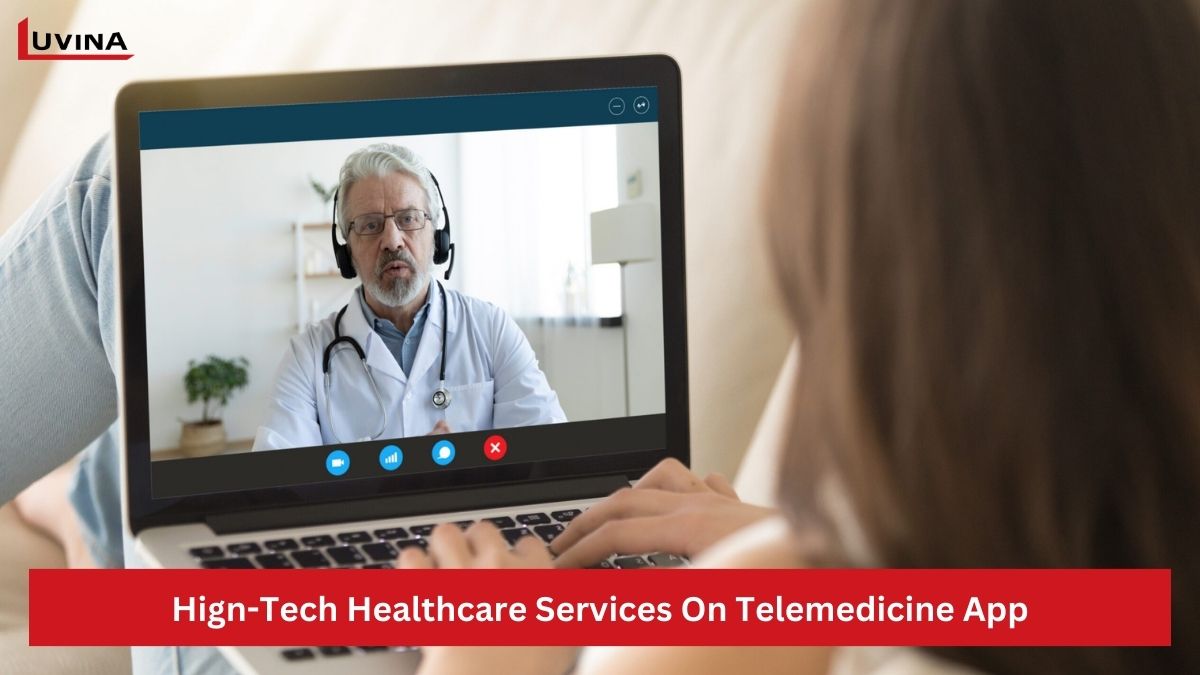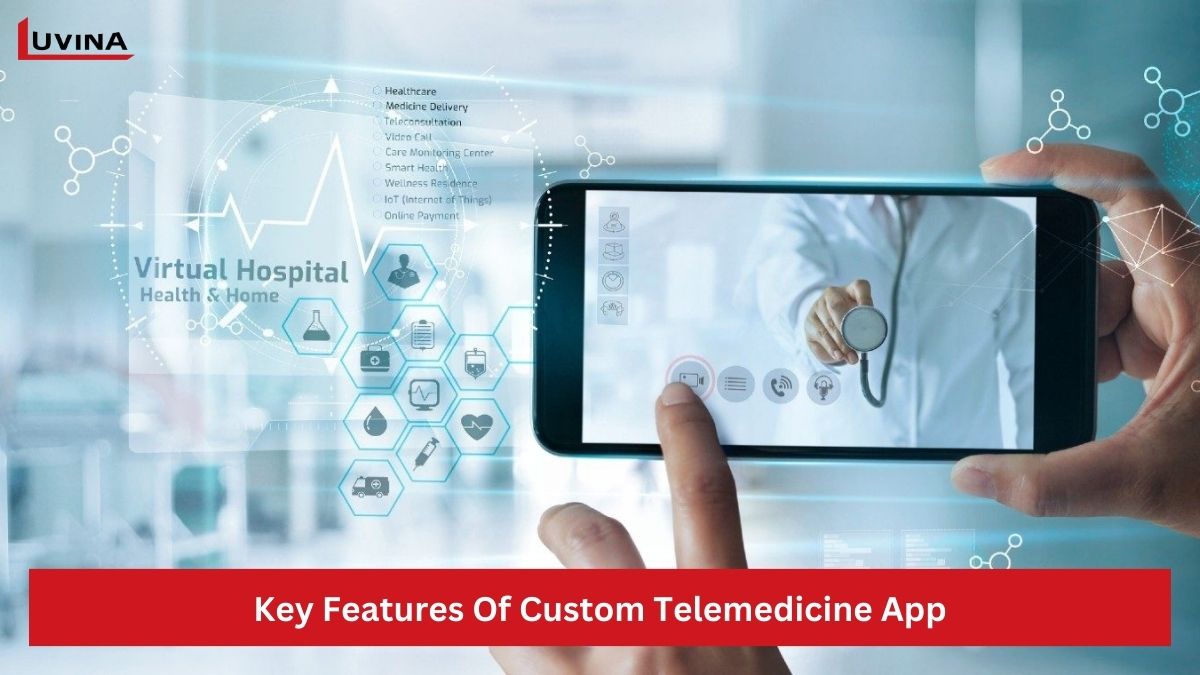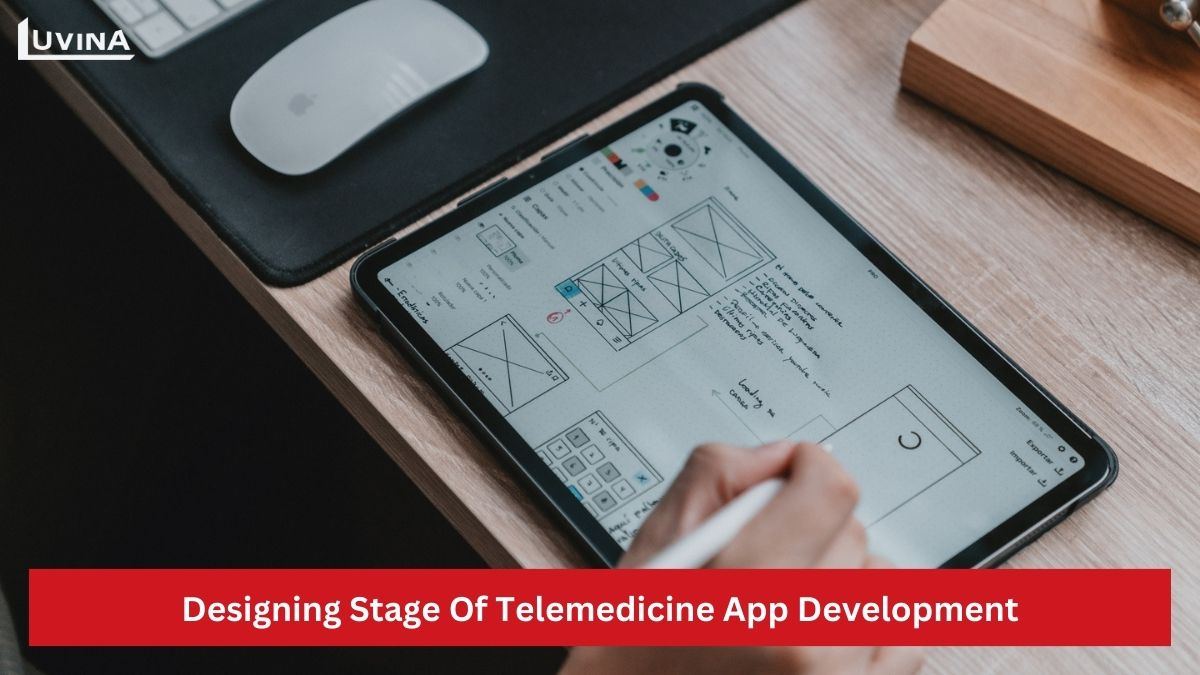Understanding telemedicine app development is a top priority for healthcare service providers.
In the digital age, healthcare has seen significant innovations, and the rise of telemedicine is a prime example. With the increasing number of smartphone users and better internet connectivity in remote areas, developing telemedicine is essential.
The definition of telemedicine apps, their key characteristics, the thorough development process, and the associated expenses are all covered in the article that follows. Businesses will gain the knowledge needed to create such an app from this.
What is a Telemedicine App?
Telemedicine apps or telehealth software are tools that allow healthcare providers to communicate with patients remotely over the Internet using video, messages, or secure data transfer.
Telemedicine apps facilitate better patient access to healthcare by eliminating geographical constraints. This makes it unnecessary for people to physically visit a clinic or hospital in order to obtain medical specialists’ diagnoses, recommendations, and advice. This guarantees prompt responses, saves patients money and travel time, and lessens the strain on already overburdened healthcare facilities.

In addition to maintaining patient interaction with healthcare services, custom telemedicine apps serve as an efficient platform for consistently monitoring chronic diseases, providing seamless consultations, and enhancing the overall efficiency of the healthcare system.
Features of Telemedicine App Development
To provide the easiest user experience for patients and help healthcare services optimize their operations, custom telemedicine apps must-have features that meet the needs of all stakeholders: patients, doctors, and healthcare service providers. Each type of app for different users should have key features specific to their needs. For example:
Telemedicine apps for patients
- – User-friendly interface: Intuitive design for easy use.
- – Scheduling: Book consultations with doctors.
- – Secure messaging: Share medical information securely.
- – Virtual consultations: Get immediate advice from healthcare professionals.
- – Access medical history: View health records, including test results and medication history.
- – Prescription management: Manage prescriptions easily.
- – Feedback and ratings: Rate and review the quality of healthcare services.

Custom Telemedicine App for Doctors
- – Electronic Health Records (EHR): Access patient information.
- – Schedule management: Handle appointment bookings, rescheduling, and cancellations.
- – Remote consultation tools: Support for online diagnostics and consultations.
- – Secure communication: HIPAA-compliant file sharing and messaging with patients.
- – Prescription creation: Manage medications and integrate with pharmacies.
- – Remote medical notes: Document and store medical records remotely.
- – Analytics and reporting: Analyze data and track patient outcomes.
What Types of Telemedicine Applications?
Understanding the different types of apps is crucial to developing a telemedicine app. Each app serves different needs and purposes. Knowing these apps will help you identify market demands that haven’t been met yet, so you can adjust the development of a new telemedicine app to fit current trends and needs.
Currently, custom telemedicine software generally includes the following types:
1. Store-and-forward apps
Store-and-forward custom telemedicine software solutions allow sharing of information at different times without immediate interaction between healthcare professionals. This type of app is well-suited for specialists in dermatology and radiology. To develop a store-and-forward app, you need to focus on data security, user interface design, and regulatory standards for managing patient data exchanges.
2. Remote patient monitoring apps
This type of custom telemedicine app is ideal for managing chronic illnesses. The app allows healthcare professionals to monitor patients continuously and intervene promptly, thereby reducing hospitalization rates and improving patient treatment outcomes. However, this app requires integrating various devices and types of data. Additionally, the app’s interface must be user-friendly for people of all ages, and the data security regulations for remote patient monitoring apps can be quite complex.
3. Real-time interactive services
This type of telemedicine app allows experts to access it instantly through video calls and messages, breaking down distance barriers. Real-time interactive telemedicine apps are quite suitable for initial care, mental healthcare, and emergency counseling. However, to develop this app, you need high-speed video and audio transmission, strong supporting infrastructure, and a deep understanding of the user experience.
The Stages of Telemedicine App Development
To ensure the development of a comprehensive telemedicine app, every stage, from project research to design, development, and launch, must be carefully planned to provide the smoothest user experience. The steps for developing a specific telemedicine app will depend on the service providers. However, they generally include the following stages:
Stage 1 – Research
This is the initial stage of preparing for the development of a telemedicine app. In this stage, you’ll need to do several tasks, such as:
- – Conduct thorough market research to identify the challenges that customers are facing. Understanding these challenges will allow you to adjust your app to ensure differentiation.
- – Study the services of competitors and industry standards to grasp the market potential.
- – Identify the primary features of the personalized telemedicine application and tailor it to the requirements of medical professionals and patients.
- – Examine regulatory requirements, such as HIPAA compliance, to make sure the software satisfies criteria for sensitive data security.
- – Choose an appropriate technology stack that includes databases, storage platforms, frameworks, and programming languages. Every technology is essential to the seamless and efficient operation of the app. Think about aspects like security, scalability, and interactivity while selecting the technological stack.
Stage 2 – Design
In this phase of developing bespoke telemedicine software solutions, wireframes and prototypes are used to visualize the user interface and key features of the program. For the benefit of patients, medical professionals, and administrative staff, you must make sure that the interface design is highly navigable, user-friendly, and simple to use during the design phase.
Now, the other components of the telemedicine software, like video consultations, encrypted chat, appointment scheduling, and document access, have to be added.

Stage 3 – Development
This is the most crucial stage in customizing a telemedicine app. At this stage, you need to decide between a custom telemedicine app or using ready-made solutions after considering the cost, deployment time, and level of customization you need. This is also the stage where you need to add strong security features, establish supporting infrastructure for app functions, and incorporate additional telemedicine features.
According to experienced telemedicine app development firms, during the development stage, it’s advisable to build a Minimum Viable Product (MVP). An MVP serves as a prototype to test the core functions of the app and gather user feedback. Then, you can continue to iterate and improve based on user feedback and stakeholder input. This approach allows you to develop and customize the telemedicine app to adapt to changing needs and trends in the healthcare industry.
Stage 4 – Implementation
It’s time to get your telemedicine app in front of the intended users after it has been customized. At this point, you must complete the following duties:
- – Test the app thoroughly and make sure it is tested for security, performance, and functionality. Also, look for any flaws that need to be fixed and fix them.
- – Create the app with a variety of platforms and operating systems in mind.
- – Create a marketing strategy to draw users and increase app awareness. Your app will be able to reach the correct audience at the right moment with the aid of effective marketing methods.
- – To assist patients and medical professionals in utilizing the app’s capabilities to their fullest potential, offer training and support programs.
Stage 5 – Maintenance and support
After implementation, the custom telemedicine app needs continuous monitoring and support. This ensures that the app operates smoothly, meets security requirements, and stays updated with the latest advancements in healthcare technology.

How Much Does a Telemedicine App Development Cost?
The price of creating an app for remote healthcare is not set. Developing an app with basic functionalities should cost at least $40,000, and even more if you need a complicated application. The price may vary depending on several factors, such as:
- Complexity: The more features an app has, the more costly it becomes.
- Platform compatibility: Custom telemedicine software solutions compatible with multiple platforms will be more expensive than apps compatible with a single platform.
- User experience: Personalized and user-friendly UX/UI design will require a certain cost.
- Security level: Adhering to security regulations and tasks like data encryption will increase the cost.
- Backend development: Infrastructure, API integration, and server maintenance can add to the data costs.
- Quality assurance: Comprehensive testing also requires a certain cost.
- Maintenance: Activities like updates and bug fixes may incur costs after the app launches.

A customized telemedicine app will cost more than store-bought options, so be aware of that as well. Because of their lower prices, greater scalability, and quicker development times, off-the-shelf apps are an excellent option for startups and small businesses.
However, if you require specific solutions, investing in custom healthcare app development is necessary. It might be more expensive, but it will make a difference.
Each custom telemedicine app is unique and varies in features and complexity. Therefore, instead of searching for information online, you can send requests to providers of healthcare software development services and present your requirements to receive detailed quotes.
>> Also read: 11 Best Healthcare Software Development Companies
How Can We Help?
In an era of rapid digital advancement, continuous development and innovation of remote healthcare solutions are essential to helping healthcare providers improve service quality and optimize operations.
Understanding this, Luvina offers the most feasible solutions to help healthcare providers develop custom telemedicine software that meets the needs of the industry and target audience. With a focus on the target user (whether patients or healthcare professionals), our solutions not only fully comply with security regulations but also ensure the highest quality of healthcare services, enhancing patient interaction and satisfaction.
Whether you own a startup or an experienced healthcare organization, choosing Luvina for a custom telemedicine app development is an opportunity to work with a dedicated team of over 100 technology experts. We can help you navigate success in the digital landscape of the healthcare industry. Contact us today because our solutions are not only easily scalable and user-friendly but also cost-effective, enabling healthcare providers to gain a competitive edge in the market.
To learn more about the healthcare industry, check out these additional resources:









Read More From Us?
Sign up for our newsletter
Read More From Us?
Sign up for our newsletter